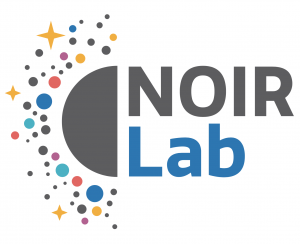Podcster: Rob Sparks. Guest: André-Nicolas Chene

Title: Quasars in the Early Universe
Organization: NOIRLab
Links: https://www.facebook.com/NOIRLabAstro ; https://www.instagram.com/noirlabastro/ ; https://www.youtube.com/noirlabastro ; @NOIRLabAstro
NOIRLab press release: https://noirlab.edu/public/news/noirlab2422/
Science News Press Release: https://www.sciencenews.org/article/quasar-zapping-star-formation
ICRAR press-release: https://www.icrar.org/quasar-neighbourhoods/
Original Paper: A lack of LAEs within 5Mpc of a luminous quasar in an overdensity at z=6.9: potential evidence of quasar negative feedback at protocluster scales: https://arxiv.org/abs/2402.06870
Description:
Observations using the Dark Energy Camera (DECam) confirm astronomers’ expectation that early-Universe quasars formed in regions of space densely populated with companion galaxies. DECam’s exceptionally wide field of view and special filters played a crucial role in reaching this conclusion, and the observations reveal why previous studies seeking to characterize the density of early-Universe quasar neighborhoods have yielded conflicting results. In this podcast, Trysten Lambert discusses how DECam enabled astronomers to reach this conclusion
Bio: Rob Sparks is in the Communications, Education and Engagement group at NSF’s NOIRLab in Tucson, Arizona
Dr. Trystan Lambert’s research career has focused exclusively on extragalactic observational astronomy, exploring both low and high redshift regimes. During his M.Sc. at the University of Cape Town in South Africa, he contributed to the completion of the 2MASS Redshift Survey and developed the galaxy group catalog. He then moved to Chile, where he pursued my Ph.D. at Universidad Diego Portales, studying galaxies and quasars in the epoch of reionization using ALMA and DECam.
Dr. Lambert is currently a Research Associate at the International Centre for Radio Astronomy Research. He spends his days developing tools to identify large-scale structures in redshift surveys, particularly in the Wide Area VISTA Extragalactic Survey (WAVES). Identifying these large-scale structures allows us to map the distribution of dark matter in the local universe and provides a crucial test bed for current cosmological theories.
End of podcast:
365 Days of Astronomy
=====================
The 365 Days of Astronomy Podcast is produced by Planetary Science Institute. Audio post-production by Richard Drumm. Bandwidth donated by libsyn.com and wizzard media. You may reproduce and distribute this audio for non-commercial purposes.
This show is made possible thanks to the generous donations of people like you! Please consider supporting to our show on Patreon.com/365DaysofAstronomy and get access to bonus content.
After 10 years, the 365 Days of Astronomy podcast is entering its second decade of sharing important milestone in space exploration and astronomy discoveries. Join us and share your story. Until tomorrow! Goodbye!

